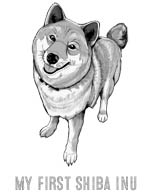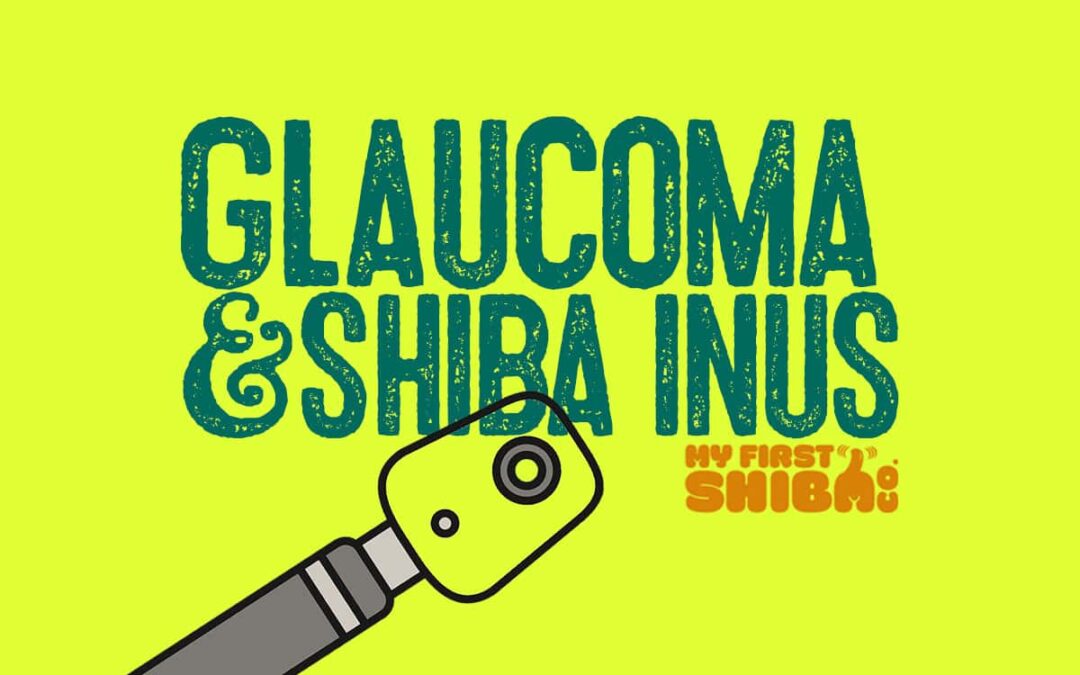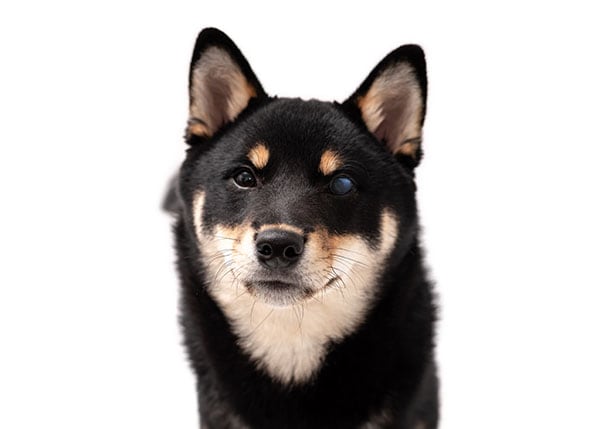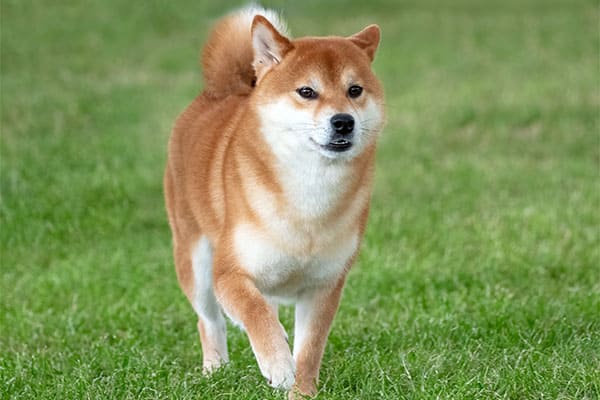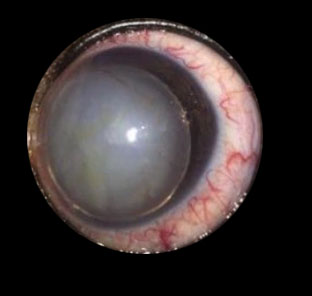On occasion, our posts contain affiliate links. However, we only recommend products that we truly believe in. For more information, visit my privacy policy page.
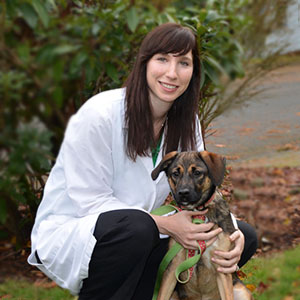
The canine eye, like that of humans, is an intricate organ responsible for vision.
Whether they’re chasing after a ball, navigating their surroundings, or simply gazing into our eyes, the gift of sight enriches our Shiba Inus’ lives and deepens the bond that we share with them.
Glaucoma is a serious eye condition that occurs when pressures within the eye are too high, leading to significant pain and blindness.
This condition may be inherited or occur secondary to other eye disease. It often requires life-long treatment and, in some cases, surgical removal of the affected eye(s).
As a pet parent, recognizing the early signs and seeking immediate veterinary care can make a big difference in the outcome for a pet with glaucoma.
Glaucoma can occur in Shiba Inus at any age
What Is Glaucoma?
Inside the eye is a clear fluid called aqueous humor, which is essential for maintaining the shape of the eye, supplying nutrients to the structures in the eye, and removing waste.
It’s produced behind the iris in the ciliary body and continuously circulates throughout the eye.
The fluid is then drained through a meshwork of tiny channels known as the iridocorneal angle (drainage angle).
Intraocular pressure (IOP) refers to the fluid pressure inside the eye, and it’s a balance between production and drainage of aqueous humor.
When the drainage of aqueous humor slows down or stops, and production continues at a regular rate, pressure builds up within the eye.
Over time, elevated IOP can have several negative effects:
- Optic nerve damage: The optic nerve is sensitive to pressure changes. Elevated IOP can compress the nerve, damaging its fibers and leading to blindness.
- Pain: As pressure builds, the eye stretches and becomes painful, leading to symptoms like squinting and rubbing.
In essence, maintaining a balanced IOP is crucial for the eye’s health and functionality.
Disruptions to this balance, leading to elevated pressure, can result in irreversible damage and vision loss.
Are Shiba Inus Prone to Glaucoma?
Shiba Inus are at slightly higher risk than some other dog breeds for developing several eye conditions, including glaucoma, cataracts, and progressive retinal atrophy.
This doesn’t mean every Shiba Inu will develop them, but it does suggest that pet parents should be particularly vigilant about their Shiba’s eye health.
Causes of Glaucoma in Shiba Inus
Glaucoma can be classified as primary or secondary.
Primary glaucoma is a hereditary condition.
Certain dog breeds, like Cocker Spaniels, Basset Hounds, Beagles, Chow Chows, and Shar Peis, among others, are more likely to develop primary glaucoma.
Dogs with primary glaucoma will eventually develop the condition in both eyes, although there may be years in between.
Secondary glaucoma occurs as a result of another underlying eye condition or injury that leads to increased IOP.
It may be associated with:
-
Uveitis: Inflammation within the eye can lead to debris and scar tissue formation, blocking the eye’s drainage channels. Uveitis can occur due to a variety of underlying conditions, such as infection, immune-mediated disease, or cancer.
-
Cataracts and lens luxation: If the lens becomes dislocated from its normal position, it may block the drainage channels. This often occurs as a result of cataracts.
-
Eye tumors: Tumors or masses can physically obstruct the outflow of fluid from the eye.
-
Blood or debris in the eye: Trauma or injury can lead to blood or debris blocking the drainage angles.
Posteriorly luxated lenses with glaucoma
Symptoms of Glaucoma
It’s extremely important to catch glaucoma early, to give your dog the best chance of regaining their vision. Symptoms may develop quickly in the case of acute glaucoma, or develop slowly over time (chronic glaucoma). Acute glaucoma is a medical emergency.
Symptoms of glaucoma include:
-
Red or bloodshot eyes
-
Clear ocular discharge
-
Cloudiness to the eye
-
Enlarged or bulging eye
-
Dilated pupil
-
Behaviors like squinting, excessive blinking, or pawing at the eye
-
Lethargy or decreased activity
-
Vision impairment or blindness – for example, difficulty navigating unfamiliar areas or bumping into things
How Vets Diagnose Glaucoma
Your vet will diagnose glaucoma based on medical history, physical exam, eye exam, and additional testing. You may also be referred to a veterinary ophthalmologist to help diagnose and treat glaucoma.
-
Tonometry: The most definitive tool to diagnose glaucoma is a tonometer, which measures the intraocular pressure (IOP) of the eye. Normal IOP in dogs typically ranges from 10 to 25 mmHg. Consistently higher readings indicate glaucoma.
-
Gonioscopy: An ophthalmologist can use a special tool to assess the eye’s drainage angle.
-
Other: An ophthalmologist may recommend additional testing, such as an ultrasound, to further evaluate the eye. Blood testing can also be used to evaluate your dog’s overall systemic health and look for possible causes of secondary glaucoma, such as infection or inflammation.
Treatment Options for Shiba Inus With Glaucoma
Prompt treatment of glaucoma in dogs is essential to preserve vision and alleviate pain associated with increased intraocular pressure.
While there is no cure for gluacoma in most cases, there are medical and surgical options available to help manage the condition.
- Pain medications: Pain management is always an important part of the treatment plan.
- Medications to decrease IOP: Several medications are available to help decrease IOP. They work either by reducing the production of the aqueous humor (the fluid inside the eye) or by enhancing its outflow. Commonly used medications include prostaglandin analogs (latanoprost), beta-blockers (timolol and betaxolol), carbonic anhydrase inhibitors (dorzolamide), and others. Medications may be given orally (by mouth) or topically (applied to the eye), and must be given on a strict and consistent schedule, often two or three times per day.
- Treat underlying eye disease: If glaucoma is secondary to another eye disease, it is also extremely important to treat the underlying condition. This may also involve medications, or, in the case of cataracts or lens luxation, surgery.
- Surgery: When medical management isn’t enough, or the disease is in its advanced stages, surgical options may be considered to help reduce IOP. In extremely painful situations where vision is non-recoverable, enucleation or eye removal may be the best option.
Regardless of the treatment recommended by your vet, regular follow-up care is essential.
Shiba Inu parents should always consult with their veterinarian to determine the best course of action for their pet’s unique situation.
What Does It Cost To Treat Glaucoma in Shiba Inus?
The cost of treating glaucoma in dogs varies widely based on many factors, such as your location, the severity of the condition, and the treatment method recommended by your vet.
Surgical interventions can range from $1,000 to $5,000 or more per eye.
Additionally, ongoing costs include long-term medications, follow-up visits, and potential complications.
Caring for a Shiba Inu With Glaucoma
A visit to a veterinary ophthalmologist for an initial examination typically costs $200 to $300, depending on the region.
The cost for phacoemulsification often ranges between $2,500 and $4,500 per eye.
This fee generally includes the pre-operative assessment, the surgery itself, anesthesia, medications, and some follow-up appointments.
Cataracts in Shibas FAQ
Does Glaucoma Cause Pain to My Shiba Inu?
Yes, glaucoma is painful for all dogs.
The pain arises from the increased intraocular pressure pressing on the optic nerve and other structures within the eye.
When the IOP rises suddenly, as in acute glaucoma, the pain can be intense.
Dogs might exhibit behaviors such as squinting or closing the affected eye, excessive tearing or discharge, pawing or rubbing at the affected eye, avoidance of light, and loss of appetite or lethargy due to discomfort.
In chronic glaucoma, the increase in pressure is more gradual and the signs may be more subtle, but the discomfort is persistent.
Can Glaucoma Cause Blindness in My Shiba Inu?
Yes, glaucoma can cause blindness.
Glaucoma results from an increase in intraocular pressure (IOP) within the eye.
This elevated pressure, if left untreated or if not adequately managed, can damage the optic nerve, which is responsible for transmitting visual information from the eye to the brain. Once damaged, the nerve fibers do not regenerate, leading to permanent vision loss.
How Long Can a Shiba Inu Have Glaucoma Before They Go Blind?
The time it takes for a dog with glaucoma to go blind varies based on the type of glaucoma, the severity of the condition, and the effectiveness of treatments administered.
In cases of acute glaucoma, the intraocular pressure rises very suddenly and dramatically. This rapid increase in pressure can lead to significant damage to the optic nerve in a short span of time.
If not treated immediately, blindness can occur within hours to days. Acute glaucoma is often very painful and presents with obvious clinical signs, urging owners to seek prompt veterinary care. Chronic glaucoma involves a more gradual increase in IOP over time.
The progression to blindness is slower compared to acute glaucoma, potentially spanning weeks, months, or even years.
The gradual nature of this form of glaucoma can sometimes make it harder to detect in the early stages, especially if the increase in IOP is subtle and the dog doesn’t show overt signs of discomfort.
Can Glaucoma Be Prevented?
Glaucoma in dogs is complex, as the disease’s onset can be influenced by various factors, including genetics, underlying eye conditions, and other health issues.
Regular eye exams, particularly for breeds predisposed to glaucoma, can help detect early signs.
Responsible breeding can reduce the occurrence in susceptible breeds, and prompt treatment of other eye conditions can prevent secondary glaucoma.
Additionally, safeguarding dogs from potential eye injuries and maintaining their overall health through regular veterinary check-ups, a balanced diet, and exercise, can indirectly support eye health.
Shiba Inu parents should be informed about the symptoms of glaucoma to catch and address the condition promptly, as early detection can significantly delay its progression and potential blindness.
How Can You Tell The Difference Between Cataracts and Glaucoma in Dogs?
Cataracts and glaucoma are distinct eye conditions that can both lead to blindness in dogs.
Cataracts manifest as a cloudiness in the lens, leading to progressive vision loss, but do not cause pain
In contrast, glaucoma involves increased intraocular pressure, causing a potentially enlarged, hazy, or bluish eye, and is often extremely painful.
Any eye issue should be evaluated by a veterinarian as soon as possible.
Finding an Ethical Shiba Inu Breeder in California
Thanks for visiting Myfirstshiba.com! We do our very best in providing our readers with awesome content about our beloved Shiba Inu breed. Some of our articles include reviews and recommendations to our favorite products. We do occasionally earn commissions from certain affiliate links that help support our work and mission. Thanks again for visiting. Shiba Kisses To All!
